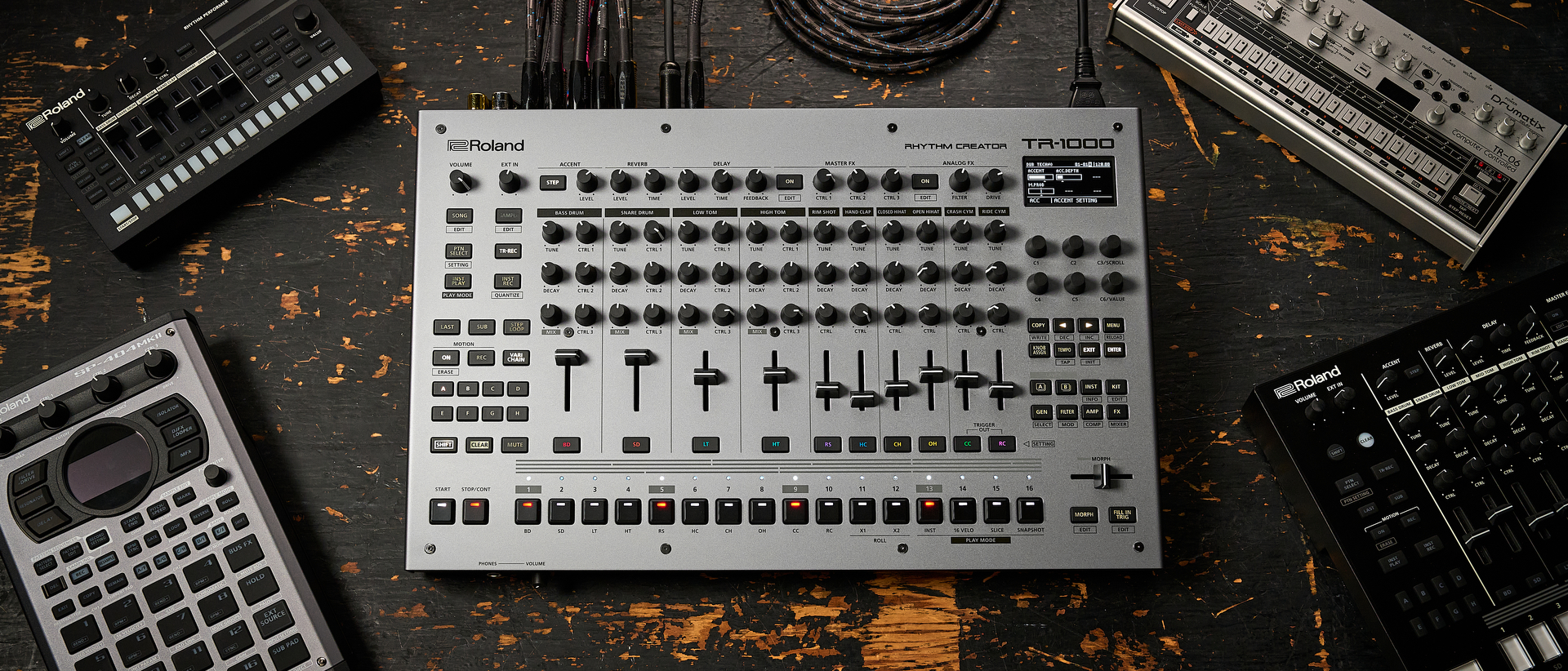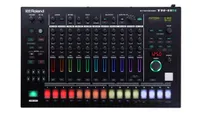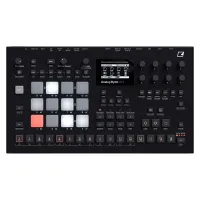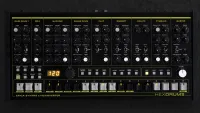MusicRadar Verdict
The TR-1000 is a drum machine that promises to be a real crowdpleaser, and mostly delivers. Some teething issues aside, this deserves its place as the flagship of Roland’s iconic TR range.
Pros
- +
An impressive, varied soundset that offers both heritage and contemporary drum sounds.
- +
Easy-to-use and flexible sampling capabilities.
- +
Broad connectivity options.
- +
Offers deep sequencing tools without feeling too convoluted.
Cons
- -
Currently suffers from unreliable MIDI and analogue sync.
- -
Lacks the mid tom/conga channel found on other TR machines.
MusicRadar's got your back
What is it?
For a long time, Roland refused to revisit the heritage of its iconic ’80s instruments, preferring to focus on new technologies even when producing continuations of ranges like its Junos and Jupiters.
That changed with the launch of the Aira range in 2014. Although still based on modern digital technology, the Aira instruments openly reproduced the sounds of classic Roland instruments. That was especially true of the TR-8, a drum machine that replicated both the sounds and general workflow of the TR-808 and TR-909.
In the decade since, Roland’s policy has swung the other way. Although the Japanese brand has released a lot of impressive gear in the past decade, it’s certainly been guilty of repackaging the same emulated sounds into a multitude of different packages across its Aira, Boutique, Juno and Jupiter ranges.
In all those cases, those vintage sounds have been provided by a mix of Roland’s Analog Circuit Behavior (ACB) and Zen-Core engines, the former of which uses analogue emulation and the latter a mix of PCM samples and virtual analogue synthesis.
The main reason that Roland’s latest drum machine, the TR-1000, is particularly attention-grabbing lies in the fact that it includes real analogue circuitry – the first time a Roland drum machine has done so in more than 40 years. That comes in the form of 16 drum voices that claim to authentically replicate those found in the original TR-808 and TR-909, plus an analogue effects unit that takes inspiration from the company’s classic synths.
While the TR-1000’s analogue voices might be its most talked-about feature, putting all the focus on those sounds would be doing the machine a disservice. Yes, there’s analogue here, but that’s only one part of an expansive feature list that reads like a best-of compilation of Roland’s modern beat-makers – plus a fair few ideas borrowed from competitors.
In terms of its sounds, those 16 analogue voices are accompanied by a generous crop of percussive generators based on a mixture of Roland’s ACB tech, simple FM synthesis, PCM synthesis and samples.
Want all the hottest music and gear news, reviews, deals, features and more, direct to your inbox? Sign up here.
Like the TR-8S before it, the TR-1000 can import user samples, but it can also sample and resample sounds directly into its onboard memory, with a sampling workflow that loosely replicates that of Roland’s popular SP-404 MkII.
Its overall creative workflow, meanwhile, builds on that of the TR-8S – itself an evolution of the classic X0X design. Sequencing is focused around a central step sequencer, the capabilities of which are expanded by a host of tools, including variations and fills, automation, a song mode and effects.
Here, those tools are augmented further by new features including off-grid recording, probability sequencing, parameter snapshots and a cross-fader controlled Morph mode.
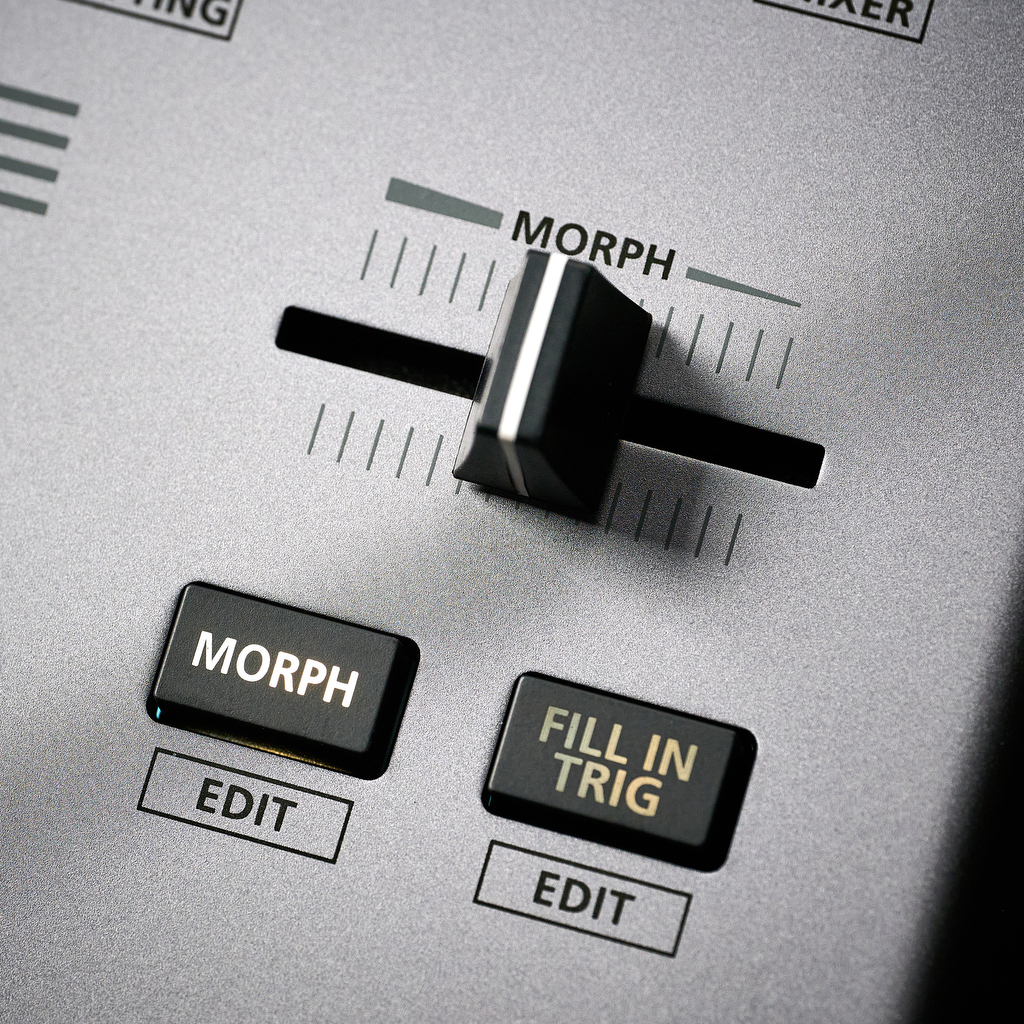
Performance
Although the general layout of the TR-1000 shares a lot of similarities with the TR-8S, in person, its size and shape is closer to that of an original 909. It’s considerably heavier than its predecessor, which immediately makes it feel like less of an obvious choice for gigging musicians, although its metal chassis gives it a tough tank-like feel, which is appropriate for one of the most expensive drum machines on the market.
Personally, I’m a little on the fence about the TR-1000’s silver and black design, which to me feels a little dated rather than retro, although I appreciate opinions will vary on this point. I do really like the 909-style angled profile, which makes programming the TR-1000 on a desktop feel considerably nicer than a TR-8S.
Disappointingly, this is standalone only and doesn’t offer a plugin version
One of the TR-1000’s biggest selling points is the abundance of physical connectivity. Whereas the TR-8S had six assignable outputs and a stereo pair of main outputs, the TR-1000 has a comprehensive array of I/O options that include individual audio/trigger outputs for each of its ten drum sounds, sampling inputs, CV/trigger connectivity, MIDI and USB connectivity.
I particularly like the inclusion of a direct output from its analogue effect unit, which allows for a multitude of routing possibilities, including being able to use the TR-1000 to process external sounds whilst simultaneously using it as a drum machine.
Like the TR-8S, the TR-1000 can also connect to a computer via USB and function as an audio interface, allowing streaming of individual outputs into a DAW (although you’ll need to download the Roland drivers to make this work). There’s also a desktop control/librarian app, although disappointingly, this is standalone only and doesn’t offer a plugin version for controlling and saving parameters inside a DAW.
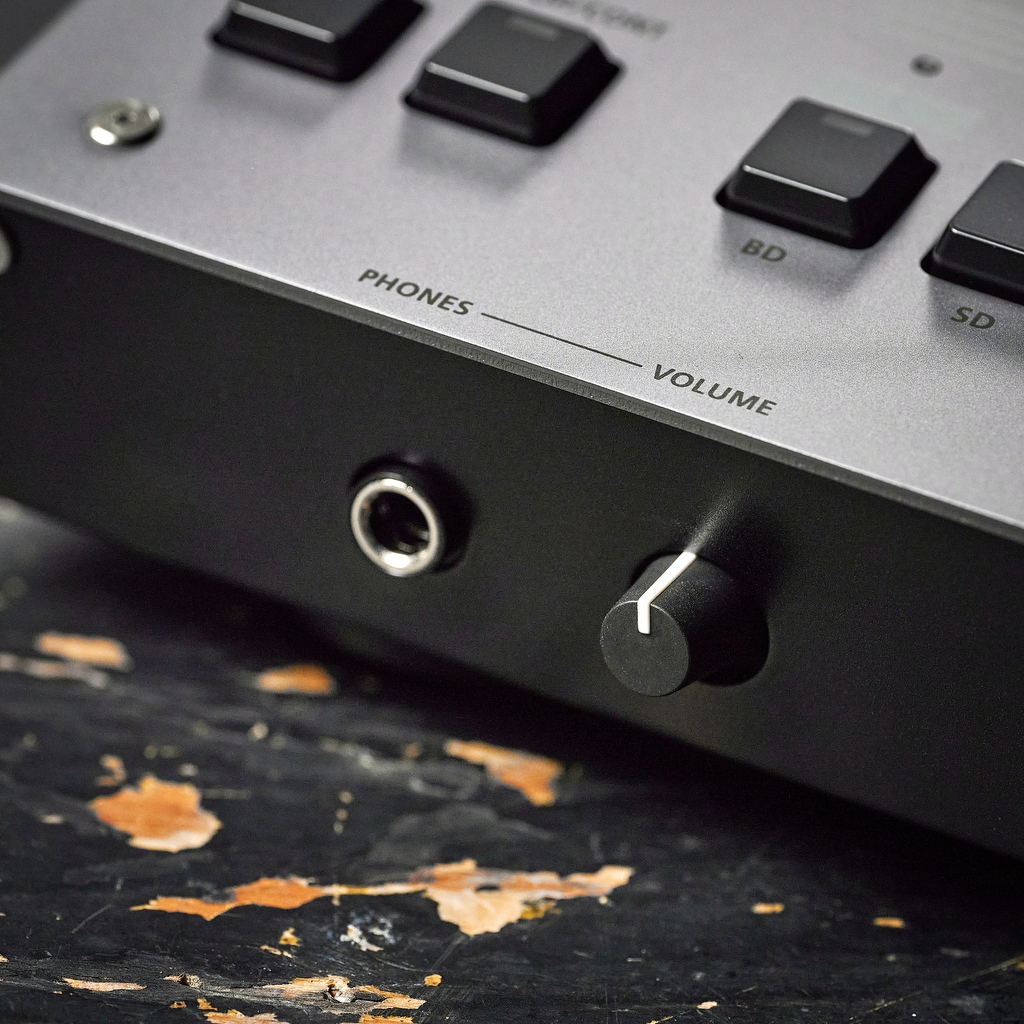
Sonics
Setting aside how they’re produced for a moment, the sounds within the TR-1000 are universally impressive. There are, of course, plenty of classic drum machine sounds based on Roland’s heritage machines. Along with the analogue 808 and 909 generators, there’s a generous crop of ACB emulations that offer interesting circuit-bent reworkings of those same machines, along with other classics like the 707, 606 and CR-78.
On top of these heritage sounds, we also get a mix of modern tones and textures, from sampled percussion to melodic stabs, punchy FM hits and creative FX.
As for those analogue sounds, I’ll admit to approaching the TR-1000 with some scepticism. The TR-808 and TR-909 are undoubtedly classics, and play important roles in countless electronic genres. Their sounds are fairly ubiquitous though, and whether through sample packs, software emulations or hardware clones, most producers have access to them in some form or another.
Obviously, a proper analogue recreation of a drum machine is always going to offer a more authentic version than using a stock sample pack from your DAW, but bearing in mind Roland’s own TR-8 and TR-8S already offered impressive, thoroughly convincing digital emulations, could the TR-1000’s sounds possibly offer enough of an improvement to warrant the significant jump to a top-end price?
Having spent time A/Bing the sounds from the TR-1000 with their TR-8S counterparts, I must admit that, for the most part, I do prefer the new analogue versions. When announcing the TR-1000, Roland stated that it had worked on improving the dynamic range of the original drum designs, and that’s noticeable. Particularly at their highest volume, the TR-1000 sounds have a little more depth than the TR-8S versions, which can sound a little compressed by comparison.
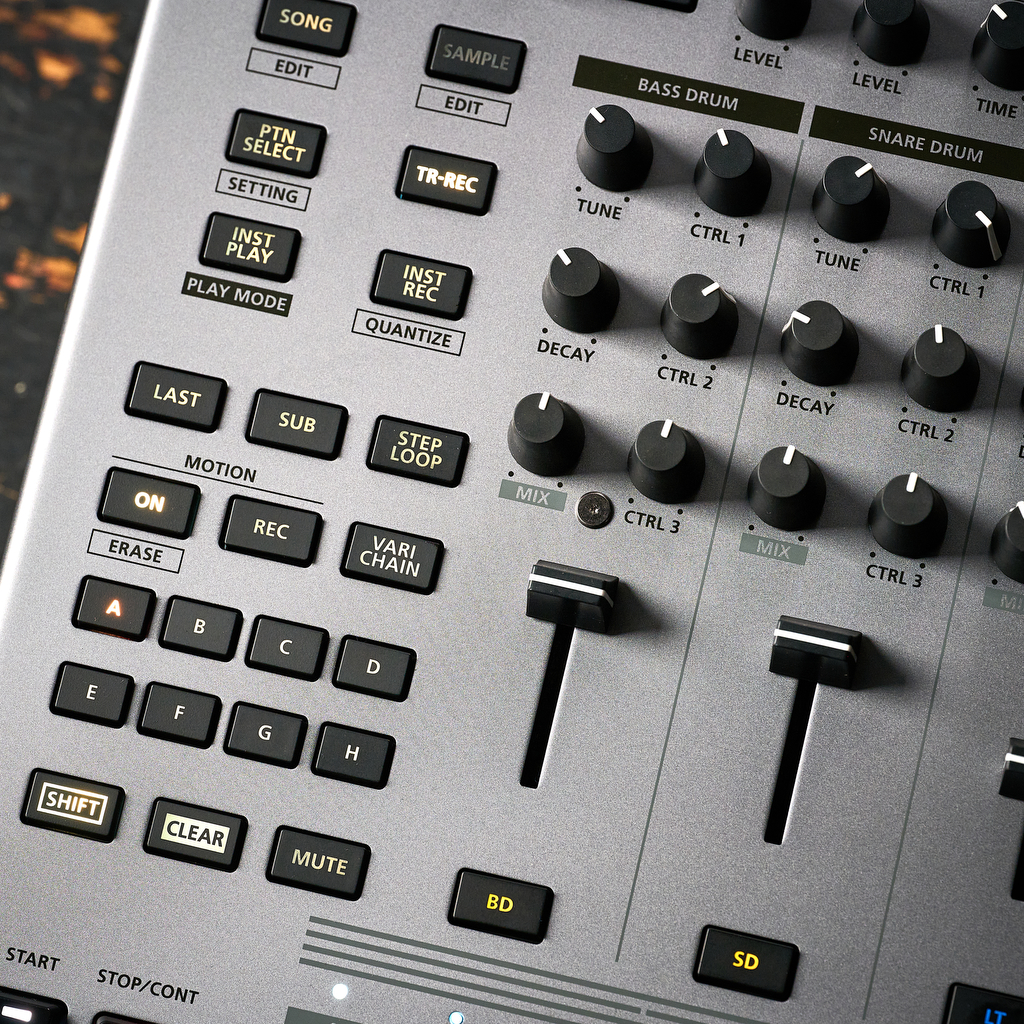
Roland has also updated the analogue circuits in other important ways too, such as adding tuning to elements that weren’t tuneable on the original machines – most notably the 808 kick – and allowing additional refinement over the decay and colour of some sounds.
That being said, though, the difference isn’t huge, and at lower volumes or within a full mix, I think you would really struggle to tell an analogue TR-1000 from its ACB counterparts. If you intend to use the machine purely as an 808/909 clone and have no interest in the sampling, modern sequencing tools and expanded connectivity – all of which go a long way towards justifying the price point – then I’m not sure it’s worth the near-£/$2k mark-up from the TR-8S.
No matter what form of generator is in use, there’s a good level of sound-shaping on offer. Each drum track has separate modules for its generator, a state-variable filter/EQ, compressor, multi-mode amp envelope, LFO and a digital effects module. In-depth design of these elements requires a fair amount of menu diving using the TR-1000’s diminutive screen, but it’s possible to map core controls to the front panel knobs for a more hands-on experience.
A particular highlight of the TR-1000 is its four-layer tracks. The bass drum, snare, low tom and high tom tracks each have both A and B layers, which can each be assigned their own generator (there’s also a good crop of presets on offer that make use of both layers at once). The only real restriction in the way generators can be mixed and matched is that it’s only possible to use each analogue generator once within any kit.
It’s also possible to sequence these layers independently using the step sequencer, allowing these tracks to play two sounds at the same time, albeit with a shared volume fader, mute control, etc.
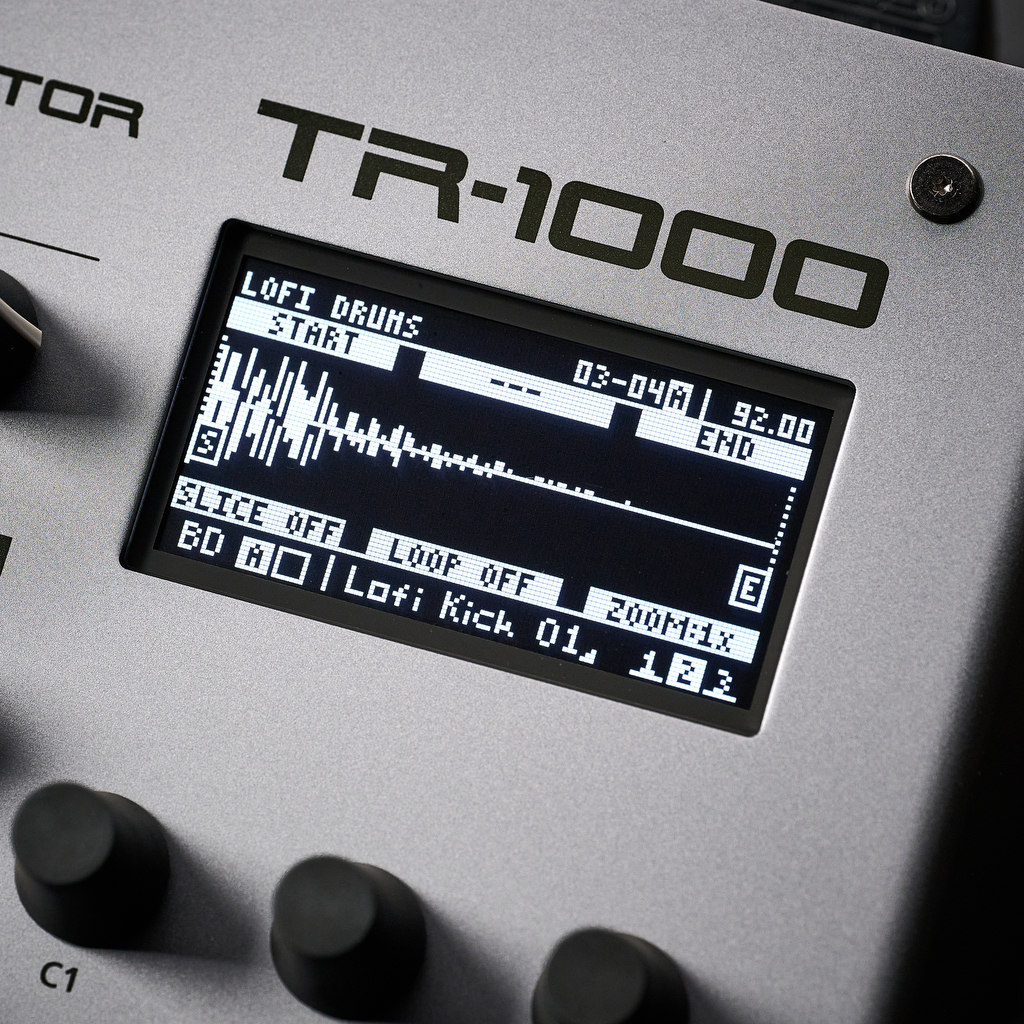
The sampling capabilities add another layer of sonic flexibility. The TR-1000’s sampling menu makes it pleasantly easy to sample either externally or internally, and then assign said sample to any of the 10 tracks.
Along with basic start/end editing, the sample editor allows for repitching, timestretching, bitrate reduction and sample slicing. By pushing these to extremes, it’s possible to get some pleasingly old-school sampling tones. In a particularly nice touch, it’s possible to apply pitch changes and timestretching to individual sample slices without affecting the others.
Personally, my favourite analogue element of the TR-1000 is its master effects unit. This combines analogue drive with an OTA-design state-variable filter inspired by those found on Roland’s classic ‘80s synths. As a combination it sounds fantastic, particularly when driven hard, and works wonders for tying together sounds, particularly when combining different analogue, digital and sample tones within a single kit.
Those analogue effects make for a nice counterpart to the digital effect capabilities, which include reverb and delay sends, a master multi-effect slot, an insert effect slot for each track and internal sidechaining capabilities.
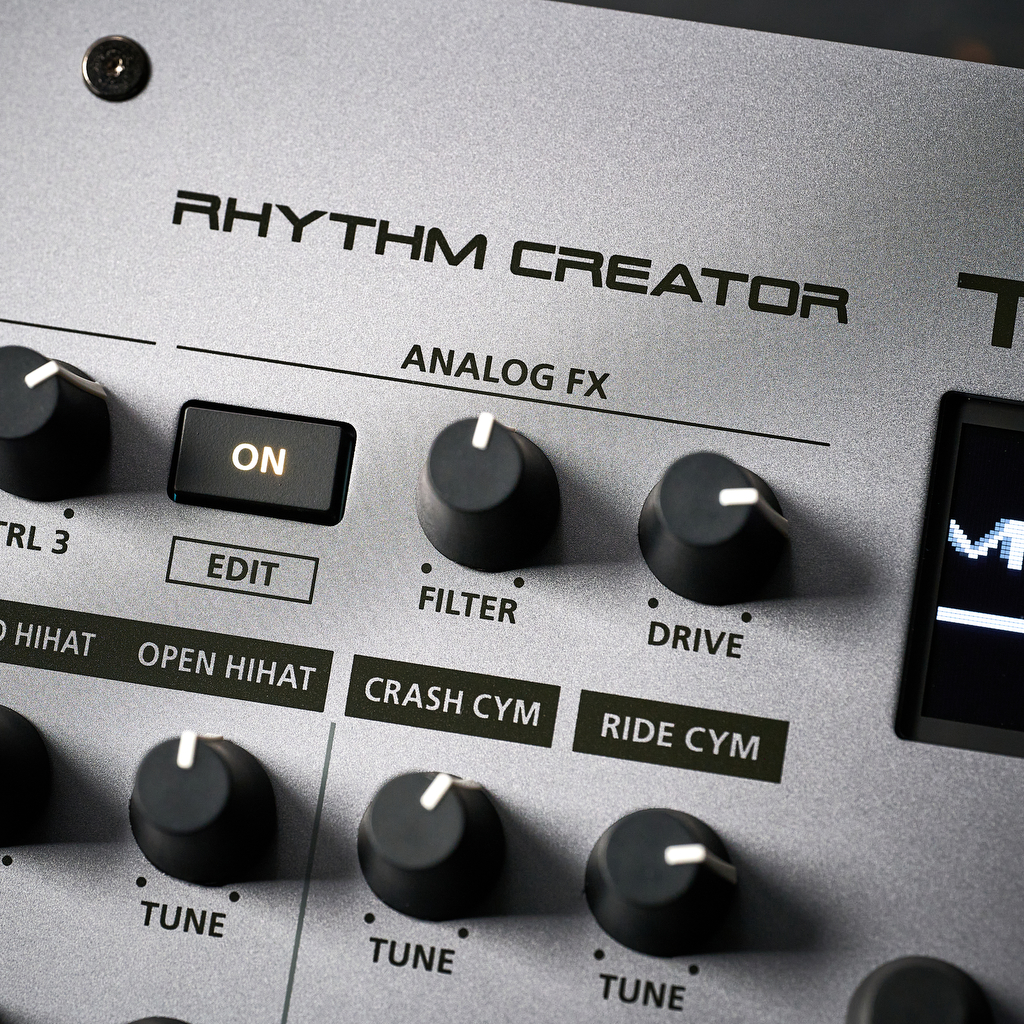
Sequencing
As much Roland’s vintage drum machines are remembered for the sounds they created, their influence and legacy lies equally in the way they helped to define the standard of modern drum sequencers. Their button step sequencers, accents, trigger outputs and various other features are staples of modern drum machines to this day.
As well as reproducing classic sounds, the TR-1000 – like the TR-8 and TR-8S before it – replicates that core workflow while building on it with modern tools and embellishments. As such, the basic workflow here will be familiar to any TR-8S user, but there are several interesting new tools introduced here that makes the TR-1000 a significantly more powerful performance tool.
While the core workflow is classic Roland, many of these more contemporary touches owe an unacknowledged debt to Elektron. This includes expanded step sequencing functionality, which allows the user to hold down a step to access sub steps, probability, cycle conditions and per-track shuffle. The machine also allows for unquantised recording, allowing for looser rhythmic creativity.
The TR-1000 also introduces a crossfader that looks remarkably like that found on the Octatrack, although functions a little differently. Here that crossfader controls a Morph mode. This allows the user to input different combinations of front panel parameter changes to one of 16 Morph slots.
With the Morph mode engaged, the crossfader is used to alter the current sound based on those settings, which is an excellent tool for hands-on performance. A similar highlight is the Snapshot feature, which lets users capture and jump between up to eight saved parameter configurations for each track.
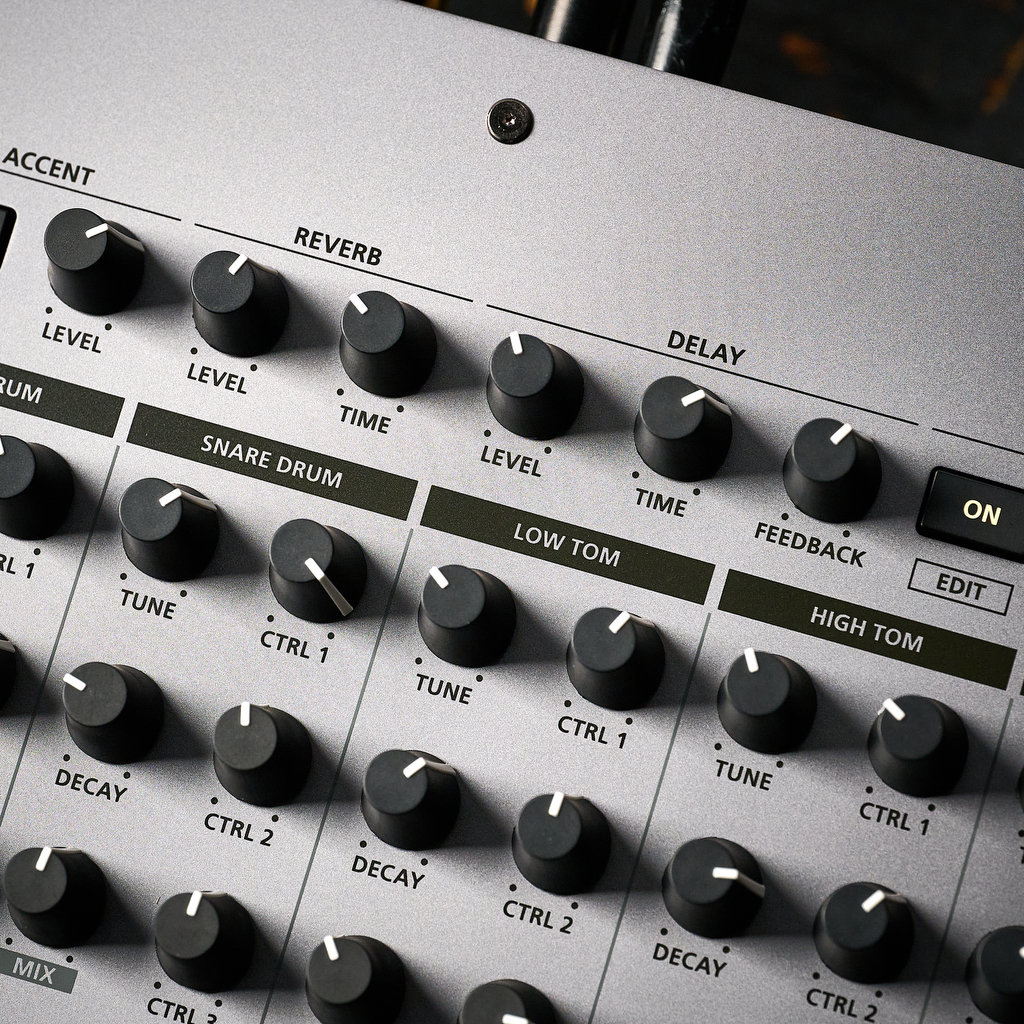
Any issues?
TR-1000 promises a lot – too much to discuss everything in the space of this review – and for the most part it delivers, although it’s not without a few teething issues and odd design choices.
One surprising difference between the TR-1000 and the original 808 and 909, as well as both the TR-8 and TR-8S, for that matter, is its lack of a mid tom/conga channel – likely a decision made to save on interface space.
The inclusion of a mid tom sound might not be a dealbreaker in itself, and Roland has increased the tuning range of the other toms, so it’s possible to create the same sound using the mid and high tom generators. The TR-1000 can mix and match its various sounds on any of the 10 channels, though, meaning an additional track could equally have been used for, say, melodic samples or additional percussion.
It’s true that, to an extent, the dual-layer capabilities of the first four tracks compensate for this omission, but those dual-layer tracks each share a front panel fader, mute button and sequencer track – all of which are important performance features. There’s no getting around the fact that the TR-1000 offers one track fewer than its considerably cheaper counterparts.
There are also a few curious omissions when it comes to how the front panel controls work. For example, the four-layer tracks each have a dedicated mix control. When loading any preset instrument that already has two different generators assigned to its layers this control is mapped to adjust the balance between parts A and B.
If the user sets up these layers themself, though – ie individually selects different generators for layers A and B – the mix control is redundant until manually assigned. It seems odd to have a control labelled ‘mix’ that doesn’t automatically mix between the two layers, and in fact just acts like any other assignable control.
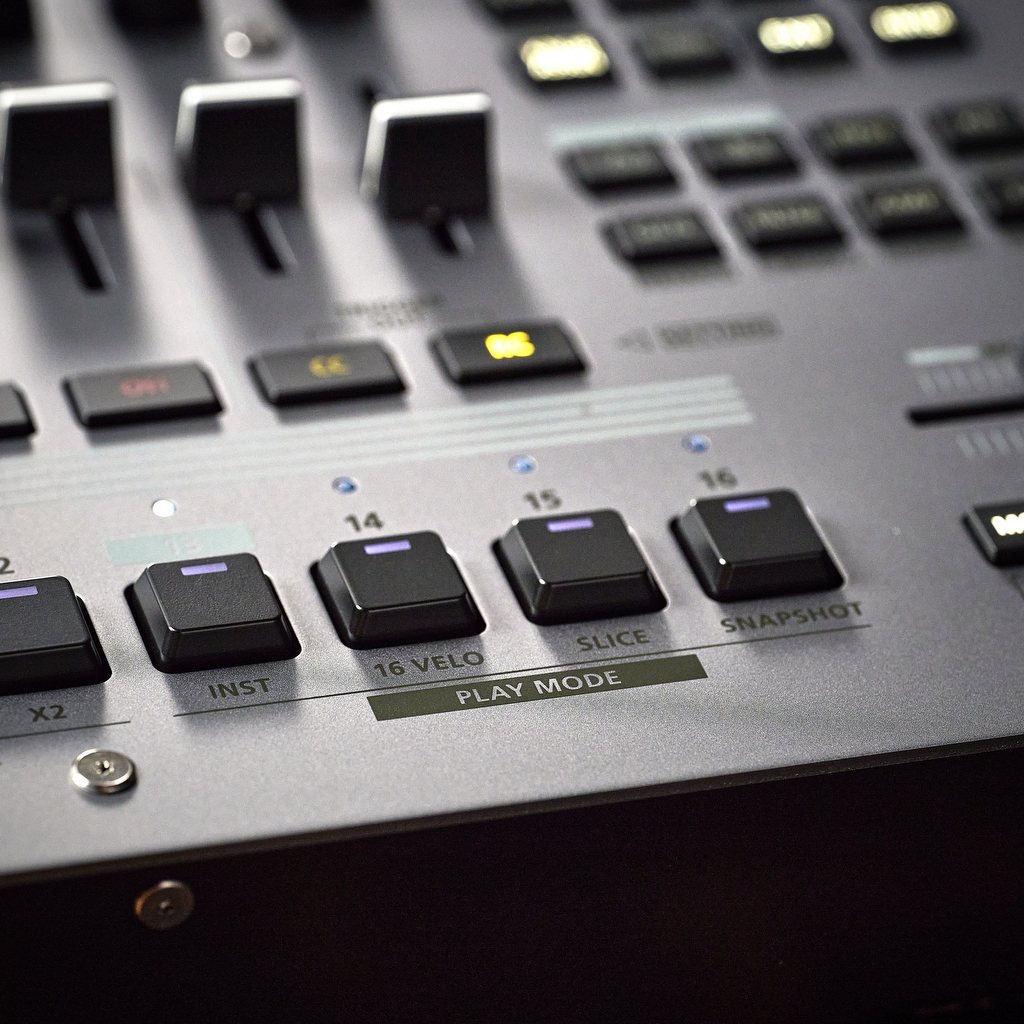
Another gap in the workflow lies in its inability to play sounds chromatically, which would be particularly handy when sequencing pitched samples. There’s a Slice play mode that allows the sequencer to trigger 16 sample slices individually, as well as a Velocity mode where the steps trigger 16 velocity levels – it seems like an obvious missed opportunity not offering a similar mode in order to play 16 pitches chromatically or across a preset scale.
The most problematic of the TR-1000’s current issues, however, is its hit-and-miss sync capabilities. In our tests the machine worked great when used as a master clock to sync external gear via MIDI or analogue sync. However, syncing the TR-1000 to an external clock introduces a lot of latency, with no easy means to address it.
The most problematic of the TR-1000’s current issues, however, is its hit-and-miss sync capabilities
This is true when routing a clock via both MIDI and analogue. For example, we tested the TR-1000 and TR-8S side-by-side. With the MIDI out of the TR-1000 routed to the MIDI in of the TR-8S, the two machines operated perfectly in sync. With the relationship reversed (MIDI out from the TR-8S into the TR-1000) there was significant latency between the two machines.
The same was true when using triggers to sync the TR-1000 with Moog’s semi-modular DFAM. With the TR-1000’s trigger output driving the DFAM sequencer, it was possible to sync the two machines tightly, but with triggers coming from DFAM into the TR-1000, there was significant lag and somewhat shaky timing.
We reached out to Roland about this, who told us they are “aware that a small number of TR-1000 users have encountered issues affecting performance stability in certain situations. Our development team has been actively investigating and working to address these reports.
“A system update is currently in progress and will include important improvements and refinements to enhance overall stability and performance.”
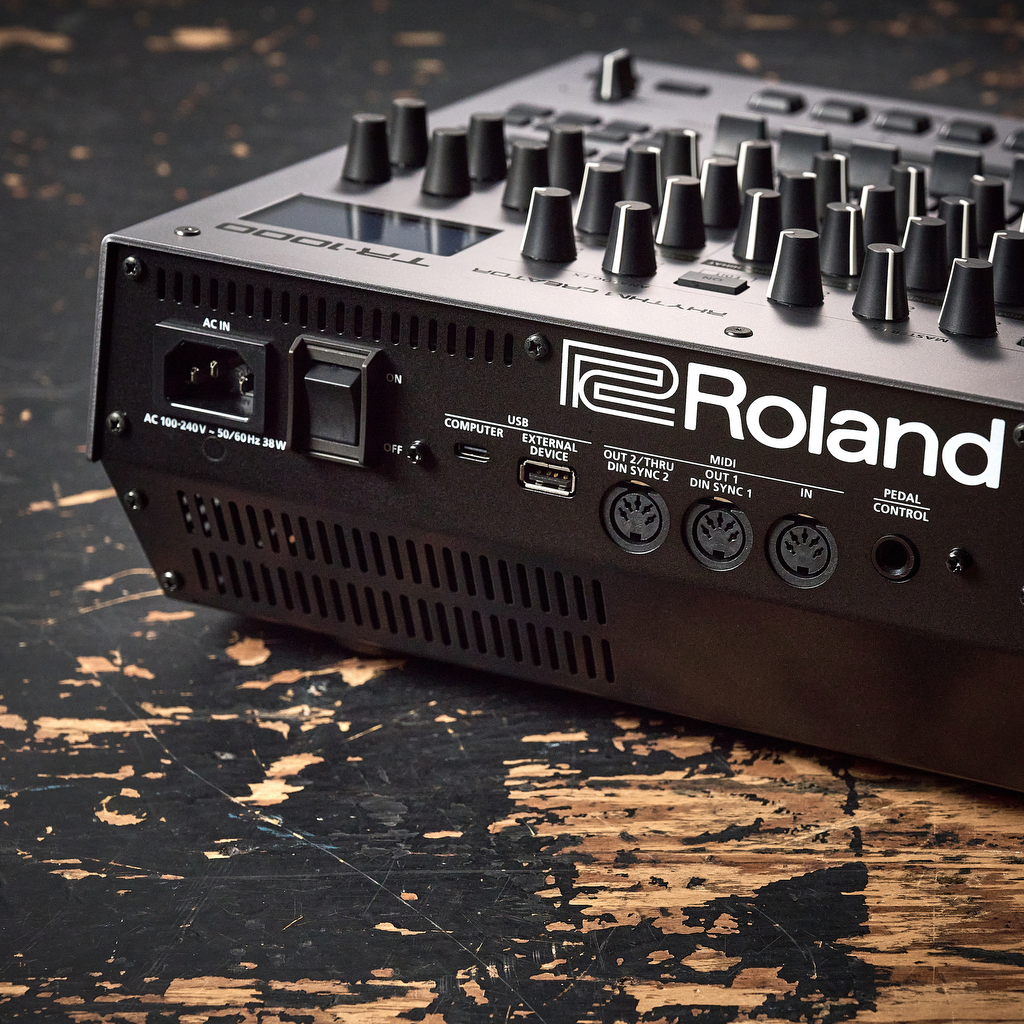
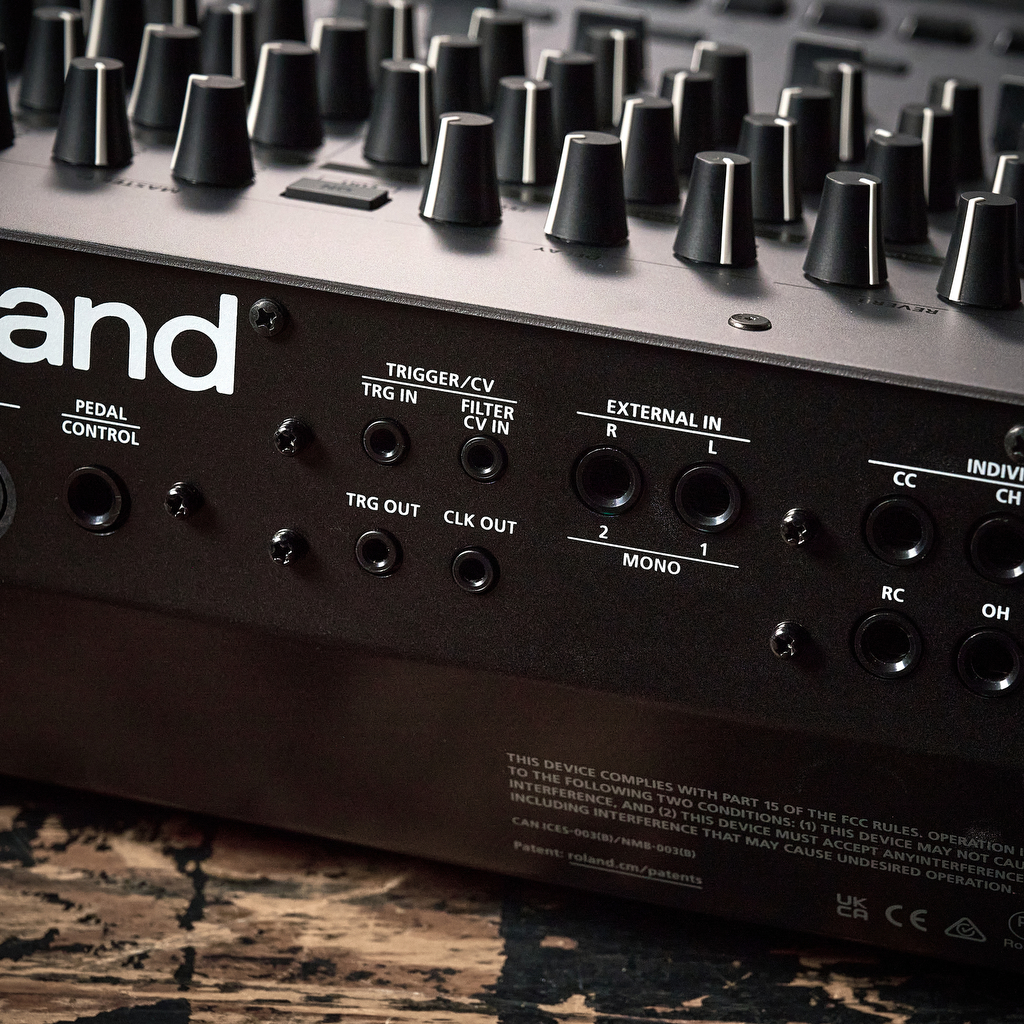
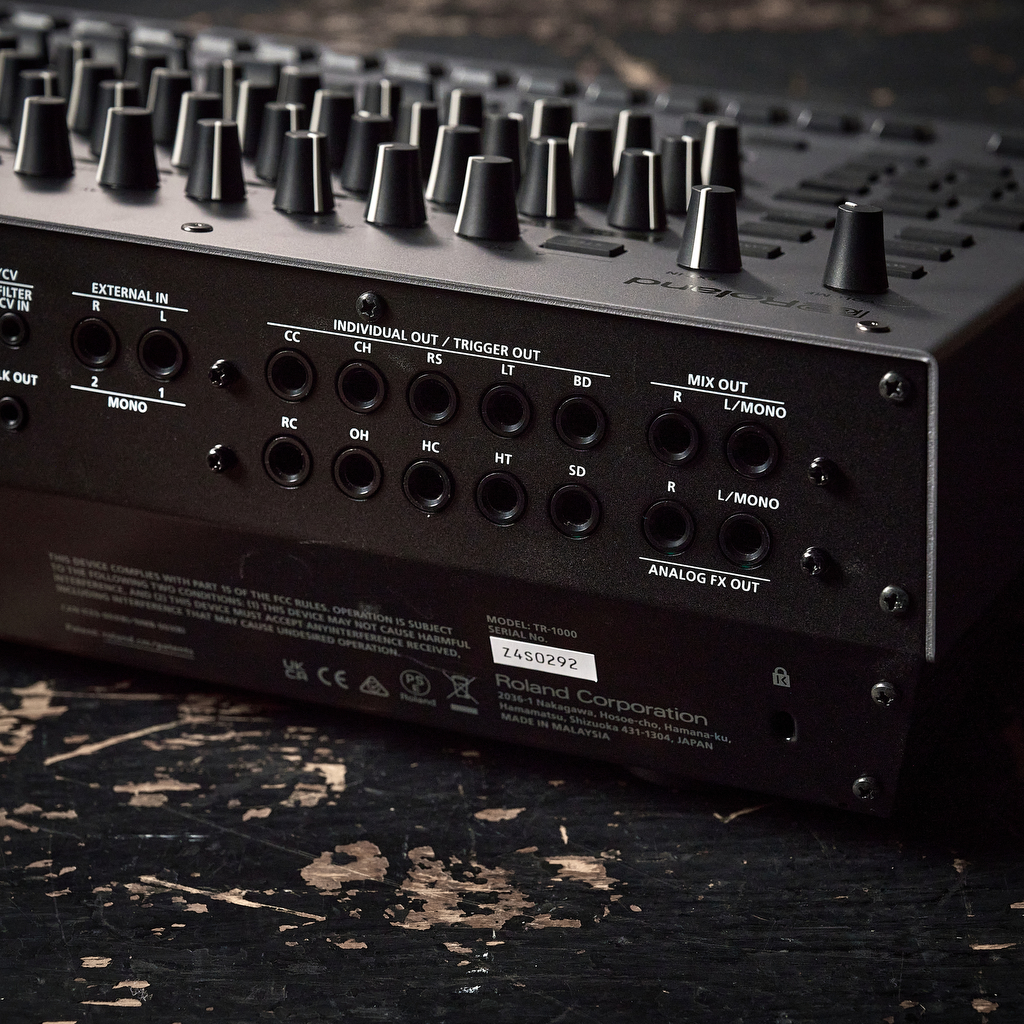
Verdict
On the whole, most of our criticisms of the TR-1000 are things that can be addressed by firmware updates, and we’re confident that Roland will continue to improve the workflow. (They tell us that, “We appreciate the feedback and patience from our TR-1000 community as we continue to strengthen the instrument through ongoing updates.”)
Setting these things aside, though, the TR-1000 has the makings of a potential future classic, albeit one that doesn’t come cheap. It’s hard to think of another drum machine that aims to do quite so much, and taken all together, the TR-1000 makes a fairly good case for its top-end price point, although unless you’re invested in its full feature set, there are better value options out there.
The most obvious comparison is probably Elektron’s Analog Rytm, which also combines analogue drums and sampling, although with its digital emulations, the TR-1000’s sound set has more breadth. What plays in TR-1000’s favour when comparing directly with the Rytm is that Roland has managed to borrow much of the sequencing depth typical of Elektron gear without getting bogged down in the same convoluted workflow. While the somewhat stingy screen means that there is a lot of menu diving involved with the TR-1000, it’s a machine that’s easy to navigate nonetheless.
A machine we’ll be talking about for decades to come
To justify the TR-1000’s price, though, you really need to buy into everything that it does. If you’re only after day-to-day 808 or 909 sounds, the TR-8S is still a far better value (and more portable) option, even if some sounds are a little flatter. Equally, Roland’s SP-404 MkII offers performance sampling at a fraction of the price. (At the time of writing, you could pick up those two together for half the price of one TR-1000).
The TR-1000 is designed to be a studio or stage centrepiece, and it’s at its best when you make use of its broad connectivity options, routing capabilities and varied performance tools. It’s for that reason that the current sync and workflow teething problems hold me back from giving it a full-throated endorsement.
I can see the TR-1000 shaping up as a highlight of Roland’s catalogue, and a machine we’ll be talking about for decades to come – but personally, I’d wait for some firmware refinements before committing to it.
Hands-on demos
Roland
Alternatives
Still a worthy alternative for all your x0x needs. Lighter and more affordable, but it can't sample. Although you can pick up one of these and an SP-404 mkII for less than the TR-1000.
Read the full Roland TR-8S review
The closest competitor to the TR-1000 in terms of specs, again, is lighter and cheaper, but a different kettle of fish in the sequencing stakes.
Read the full Elektron Analog Rytm mkII review
We've not actually had our hands on Hexdrums yet, but the new kid on the block from Erica Synths promises punchy, characterful sound with a versatile sequencer and an accessible workflow.
Read more on the Erica Synth Hexdrums
Specifications
Price | €2,699 / £2,286 / $2699 |
User Drum Kits | 2,048 (128 Kit x 16 Project) |
User Patterns | 2,048 (128 Pattern x 16 Project) |
Step Sequencer | Layer Track x 4 Single Track x 6 1 exclusive part for trigger out 16 steps per 1 variation 8 (A - H) variations per 1 pattern 4 Fill-in patterns per 1 pattern |
Generator | Analog: 16 tones ACB: 75 tones FM: 7 tones PCM: 340 tones Sample: 2,121 tonesSamplerInternal Data Format: 16-bit linear Import Format: WAV, AIFF, MP3 * Dedicated software supports WAV, AIFF, MP3, FLAC, M4A. Sample Rate: 48 kHz Sampling Time: The maximum is 16 minutes (1 Sample).EffectsFILTER: 2 types |
Effects | AMP: 2 types COMP: 2 types INST FX: 17 types REVERB: 6 types DELAY: 4 types MASTER FX: 14 types ANALOG FX: FILTER, DRIVE |
Display and storage | Internal Storage Size: 46 GB (USER Area) Display Graphic OLED display External Storage USB flash drive (sold separately) for backup, restore, import, and export functions |
Connectivity | PHONES jack: Stereo 1/4-inch phone type MIX OUT (L/MONO,R) jacks: 1/4-inch phone type ANALOG FX OUT (L/MONO, R ) jacks: 1/4-inch phone type INDIVIDUAL OUT/TRIGGER OUT (BD--RC) jacks: 1/4-inch phone type EXTERNAL IN (L/MONO 1, R/MONO 2) jacks: 1/4-inch phone type TRIGGER/CV (TRG IN, TRG OUT, FILTER CV IN, CLK OUT) jacks: Miniature phone type PEDAL (CONTROL) jack MIDI (IN, OUT1 DIN SYNC1, OUT2/THRU DIN SYNC2) jack USB (COMPUTER) port: USB Type-C(R) (Audio/MIDI) USB (EXTERNAL DEVICE) port: USB A AC IN jackPower SupplyAC 117--240 V 50/60 HzPower Consumption38 W *Power consumption when in OFF mode (when the power automatically turns off): 0.2 W |
Dimensions | (W x D x H) 486 mm, 311 mm, 125 mm |
Weight | 5.5kg |
Contact |
I'm the Managing Editor of Music Technology at MusicRadar and former Editor-in-Chief of Future Music, Computer Music and Electronic Musician. I've been messing around with music tech in various forms for over two decades. I've also spent the last 10 years forgetting how to play guitar. Find me in the chillout room at raves complaining that it's past my bedtime.
You must confirm your public display name before commenting
Please logout and then login again, you will then be prompted to enter your display name.
